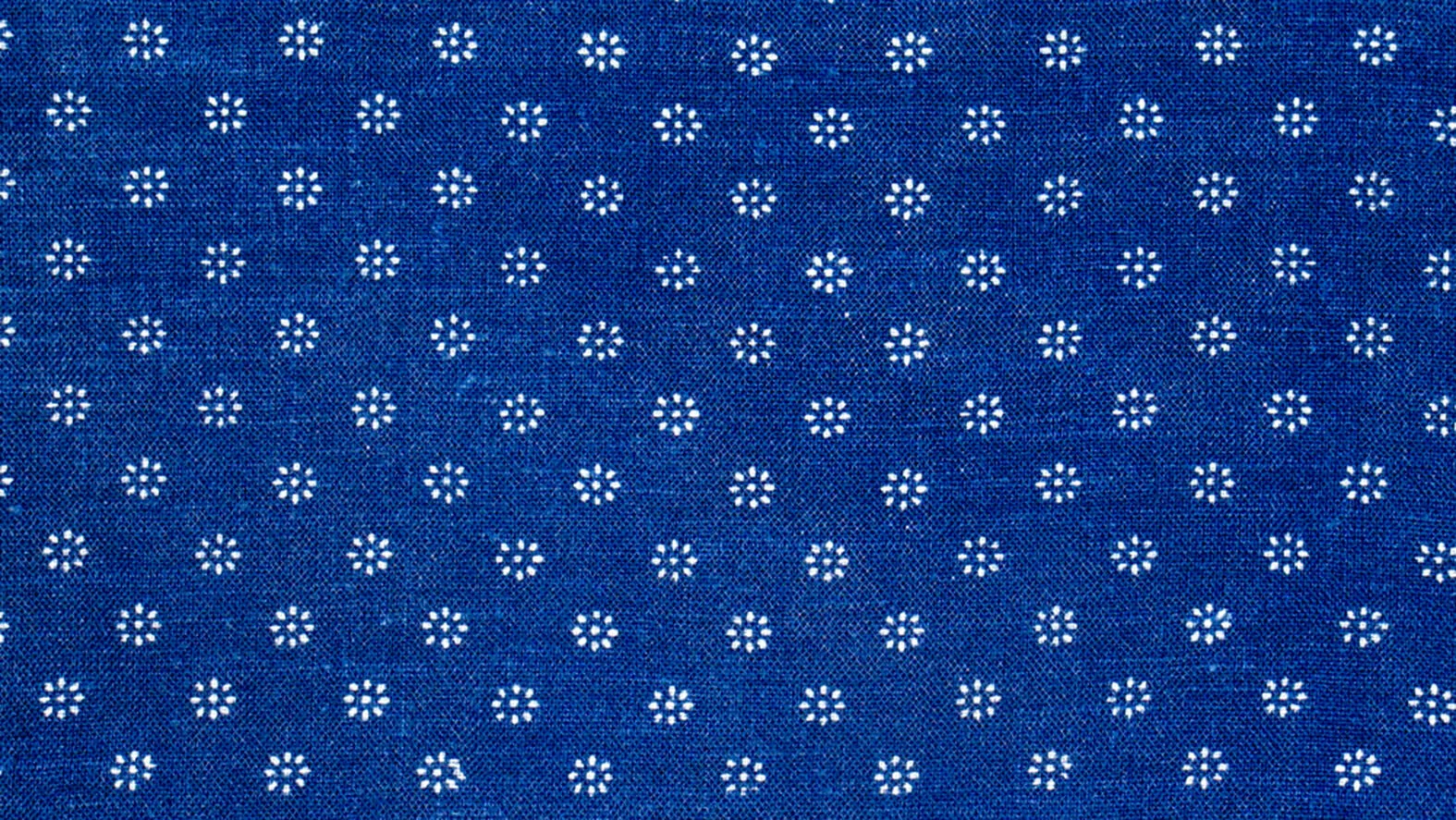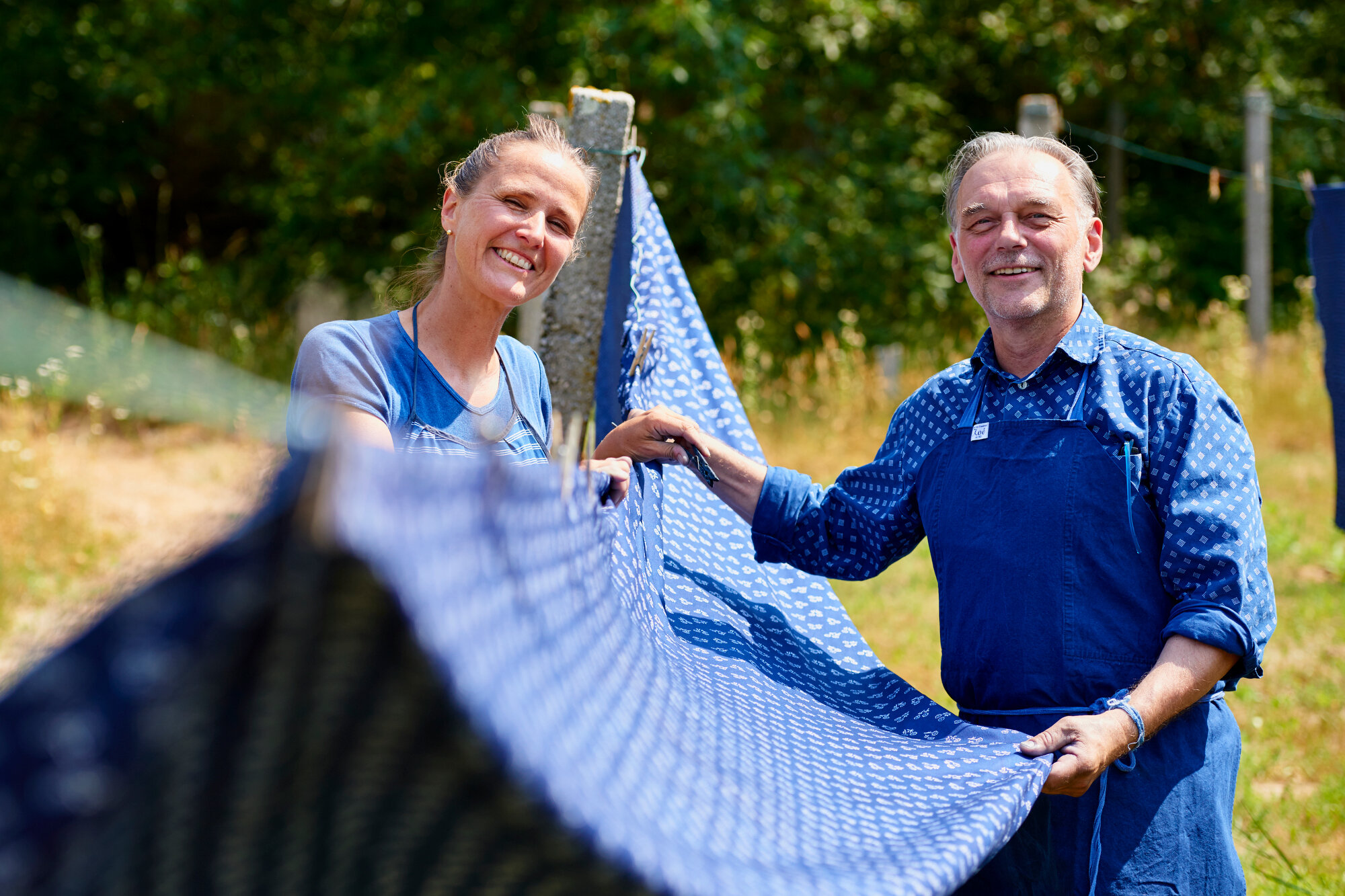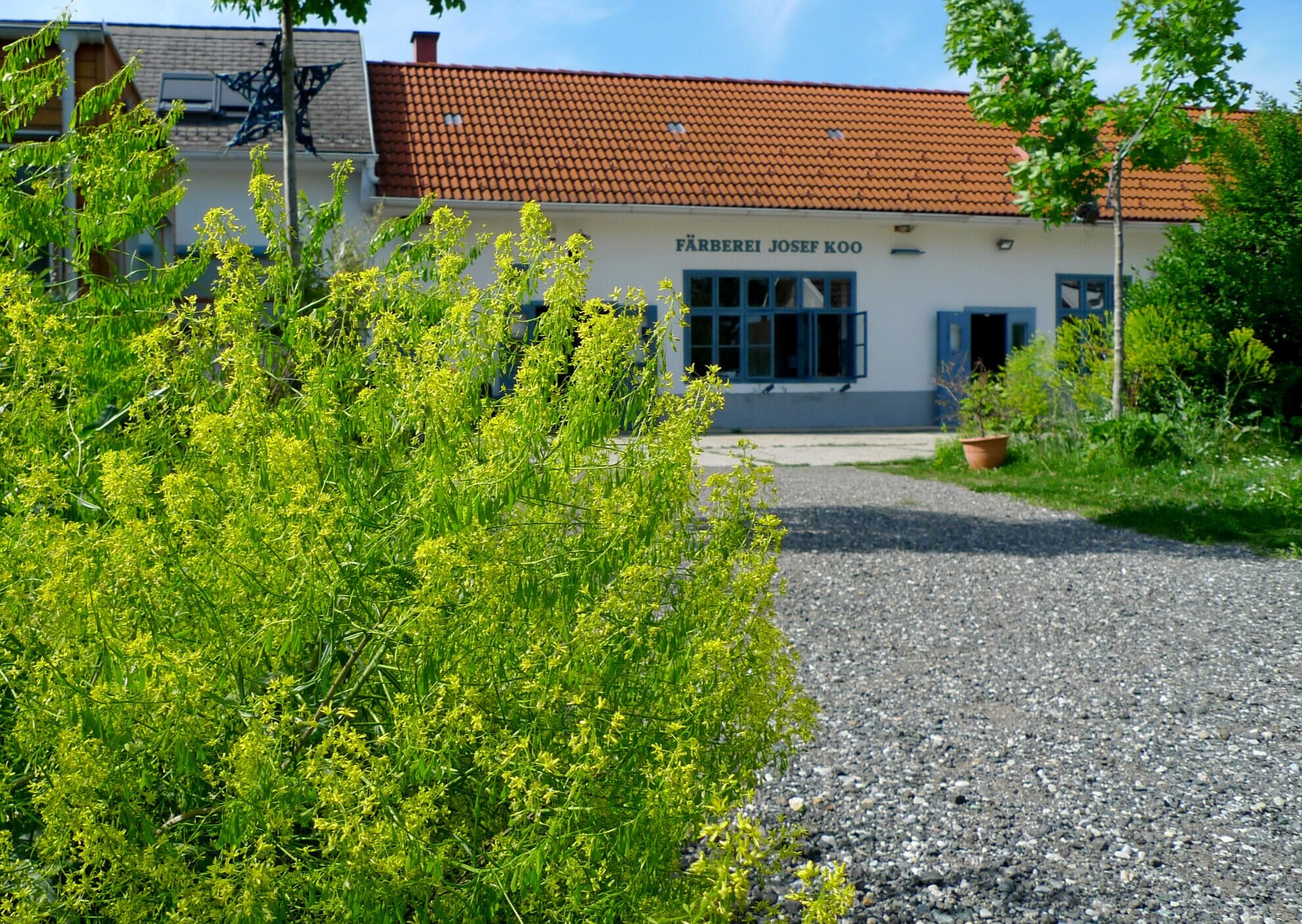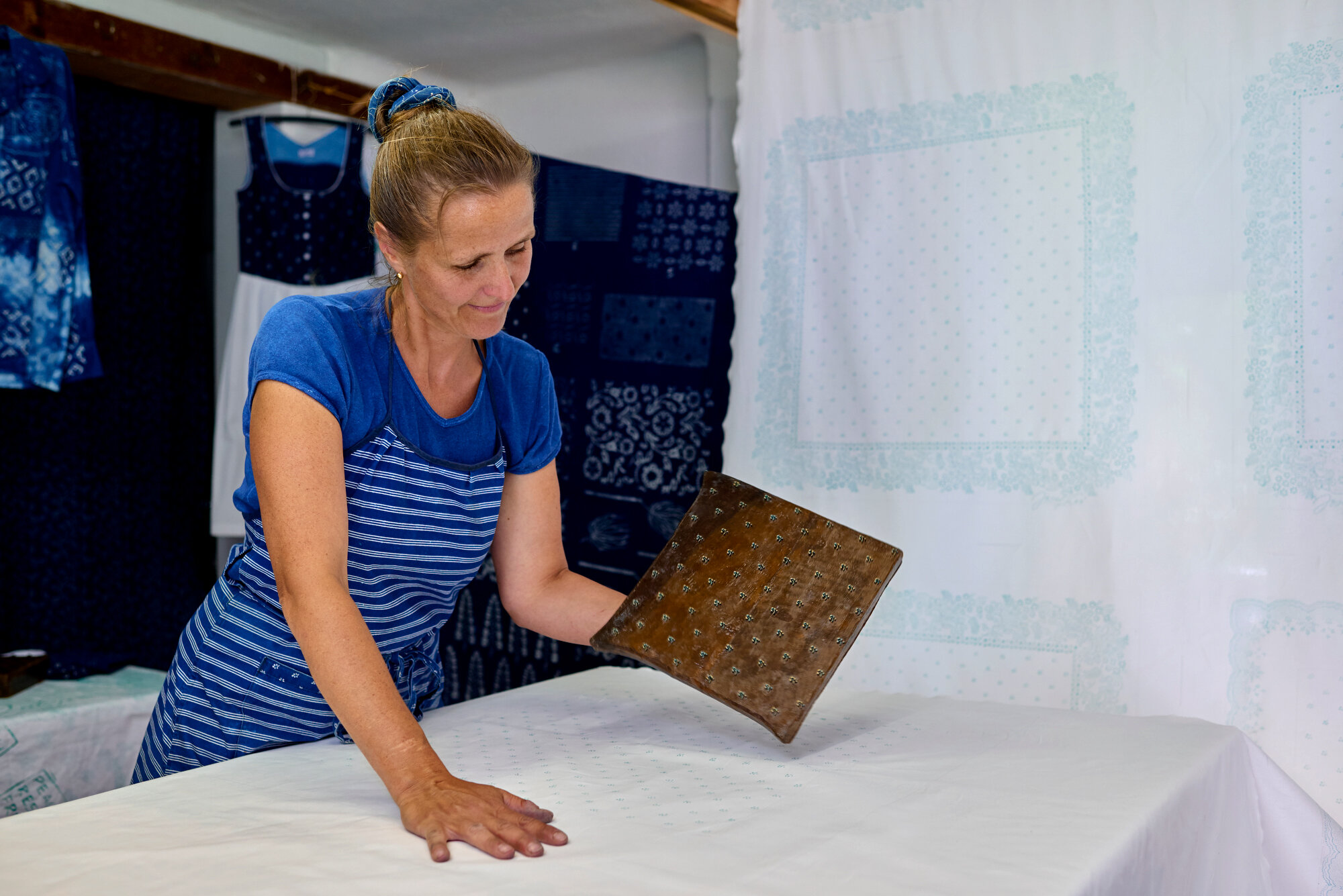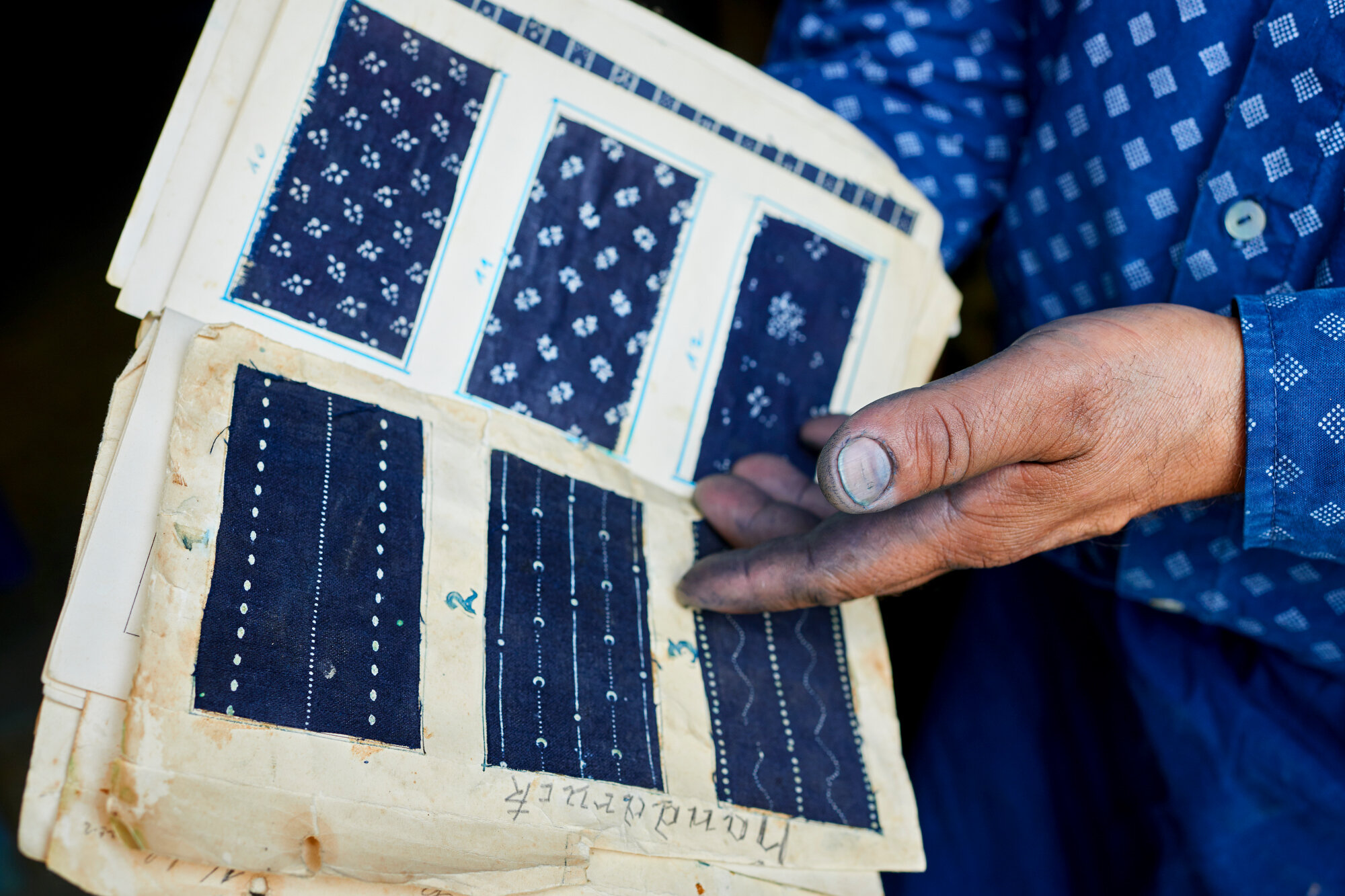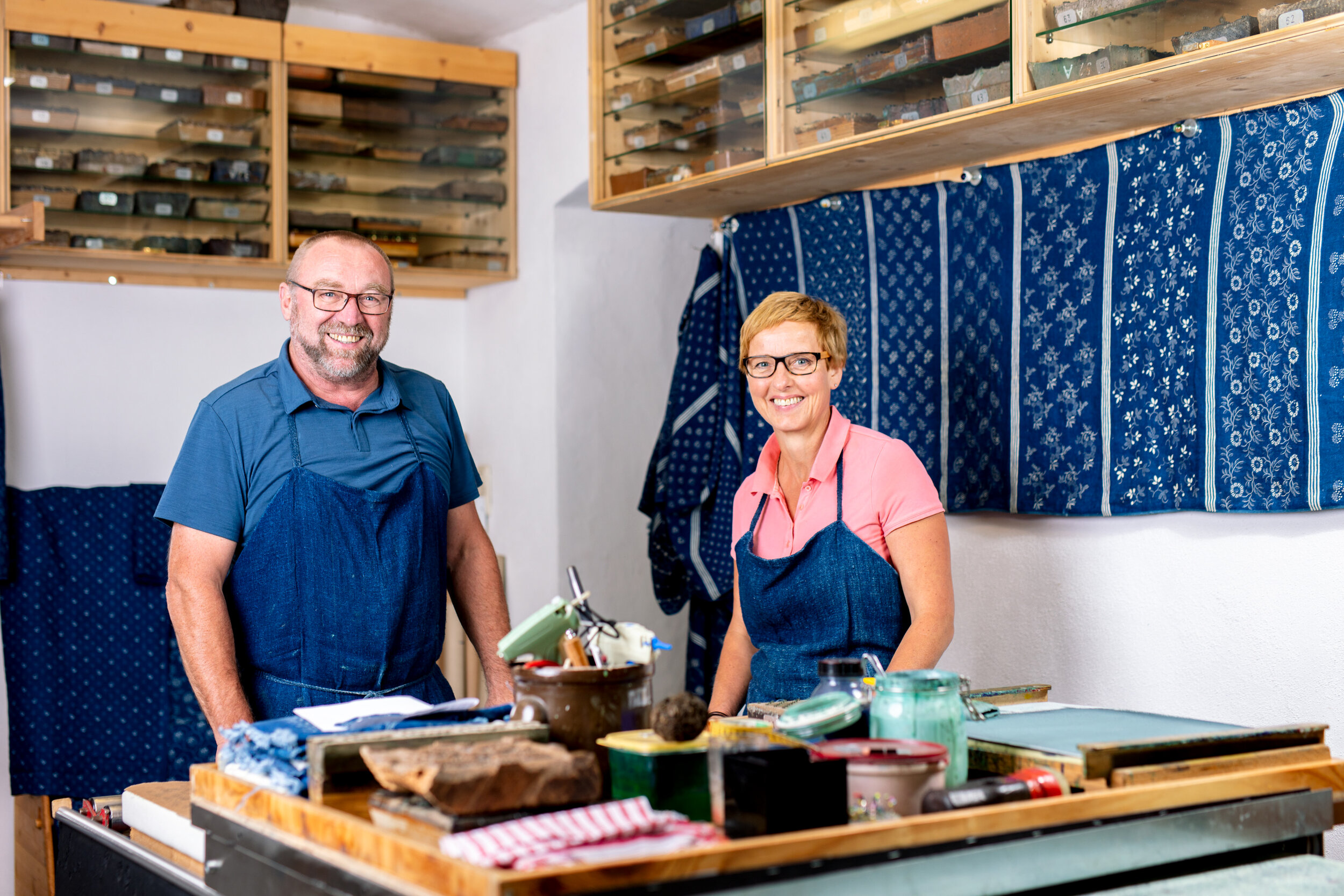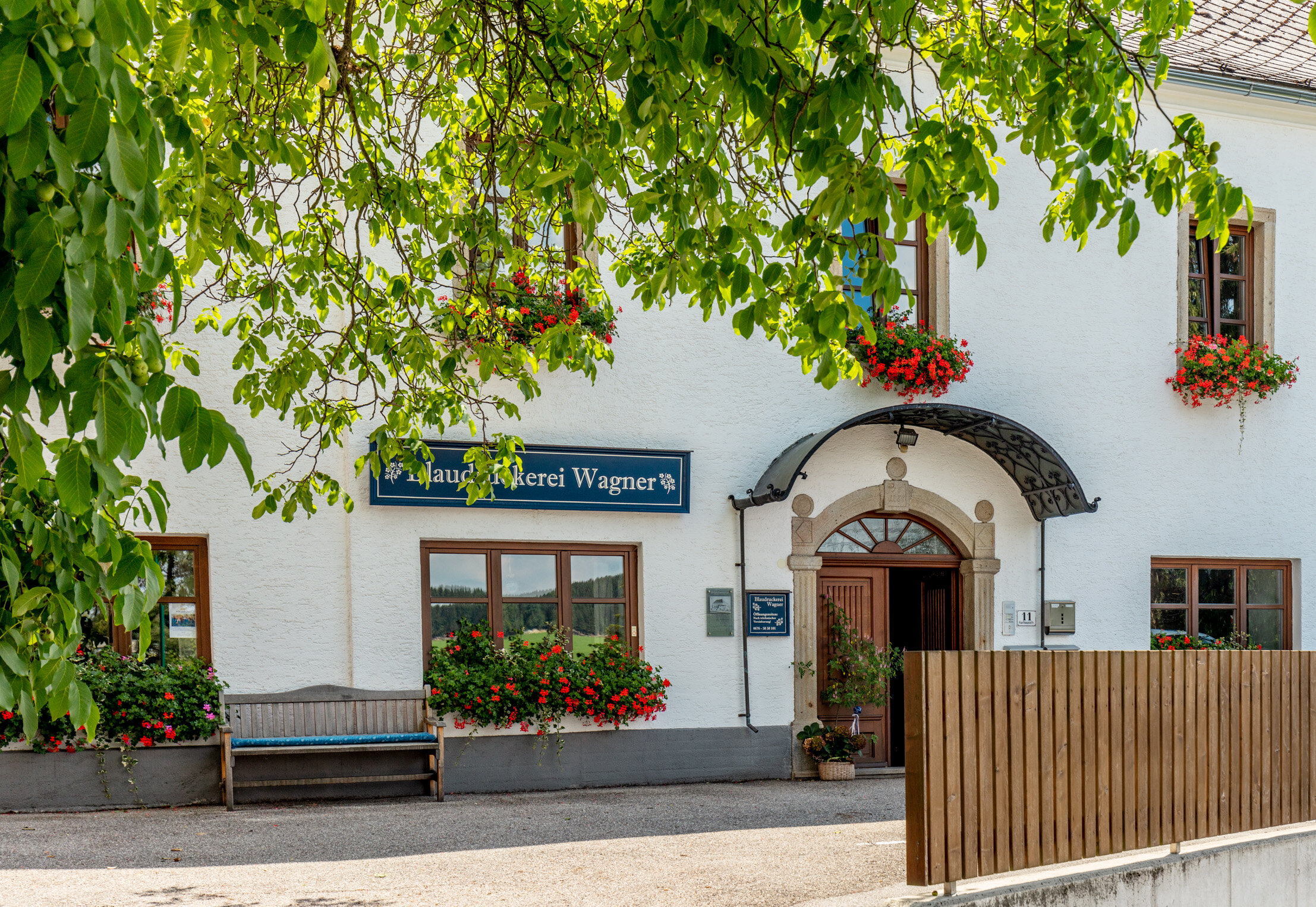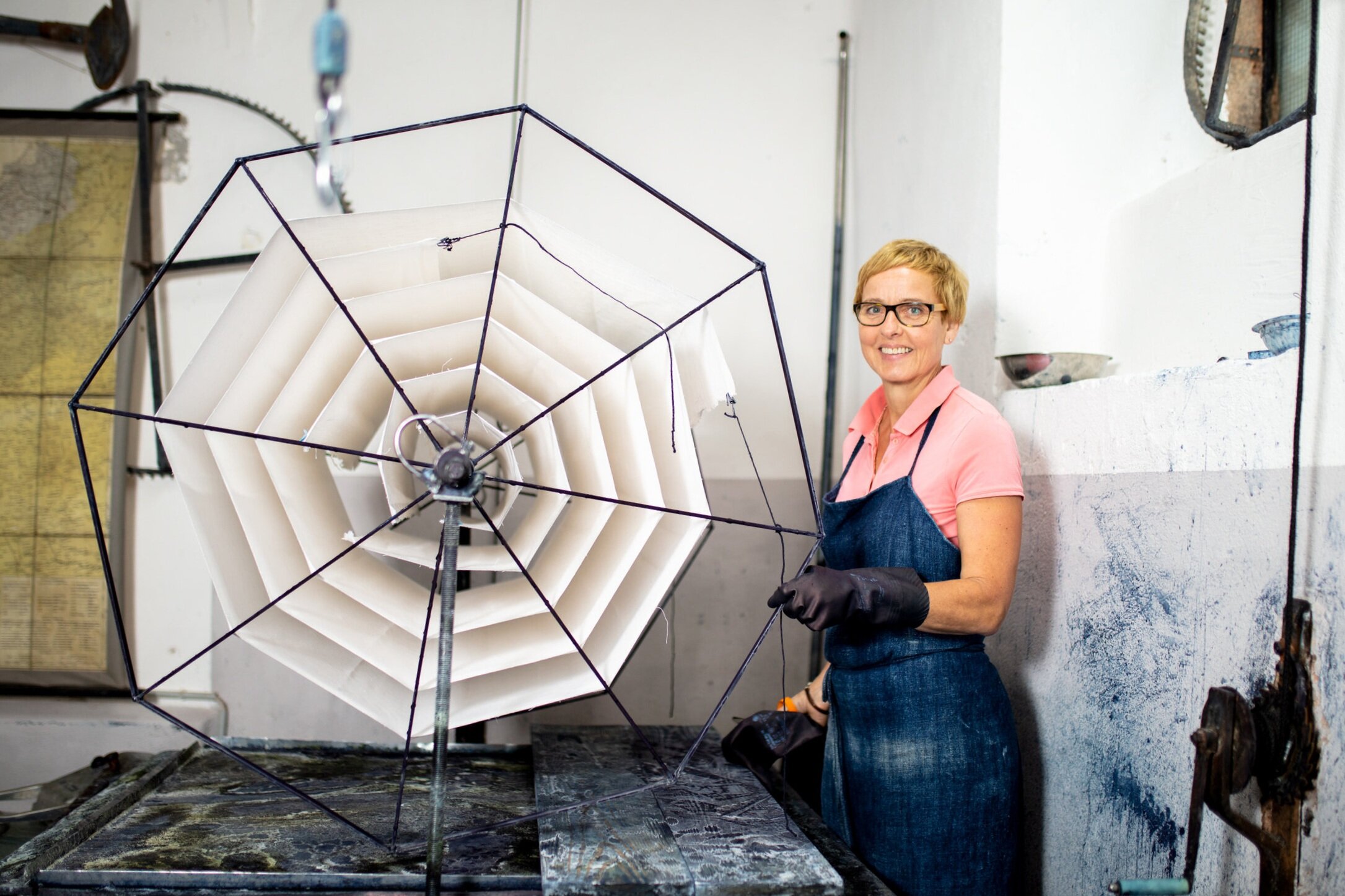Austrian Blueprint Workshops Koó and Wagner
Blueprint is a non-industrial craft process referring to the practice of printing a resist paste onto fabric before dyeing it with indigo. Although blueprint has long been a distinctive tradition in Europe, it has experienced a rapid decline in practitioners in recent decades. A previous post on the making process included blueprint’s history. This article will introduce the only two remaining blueprint workshops in Austria: Original Blaudruck Koó and Blaudruckerei Wagner.
ORIGINAL BLAUDRUCK KOÓ
Joseph Koó's family-owned workshop, Original Blaudruck Koó, is located in Burgenland, south of Vienna and close to the Hungarian border. Founded in 1921 by his grandfather, it is now run by the third generation. Joseph and his wife Miriam apply the designs onto the cloth (mostly linen, cotton, silk and leather) using a dye-resist paste called ‘Papp’ in German, and handcrafted wooden blocks made of either pear or linden wood. The wooden blocks holding particular designs are more than 200 years old.
Miriam and Joseph Koó of the Original Blaudruck Koó. Photo by Robert Kalb
Original Blaudruck Koó - Koó’s blueprint workshop in Steinberg, Burgenland. Photo by Karin Altmann
Joseph specialises in the so-called ‘double prints’, where each fabric has different patterns on the front and the back. These are also made by hand and especially with an inherited perrotine printing press that has been in use since the 1930s.
Joseph Koó’s inherited perrotine printing press has been in use since the 1930s. Photos by Karin Altmann
Miriam Koó printing with wood blocks. Photo by Robert Kalb
In the past, indigo-dyed textiles were used as the everyday and workwear in the area. Blue was the colour worn by common people. Farmers wore a plain blue apron or half apron (‘Fiata‘ or ‘Schurz‘) when working on the fields. The women’s aprons were printed on both sides. Since there was no washing machine, laundry was a tedious task. Double-printed aprons made life easier because they can be easily turned over and worn both ways to serve various functions, for example, one side for farm work and the other side for household and kitchen work. And in case you have to get something quickly from the village or a visitor comes spontaneously, you have a clean apron to change into in no time. The white patterned blue clothes were also worn in the church on Sundays, on festive days and special occasions, and often mangled to give the fabrics a beautiful sheen.
When Joseph's father took over the workshop in the 1950s, the blueprint traditions appeared to be fading. Many workshops were shutting down. They could no longer compete with production from modern machines which generated synthetic textiles in every conceivable colour and patterns within minutes. Yet, through hard work and determination, his workshop has managed to survive to this day, set up in the same way as it was built by his grandfather in 1921. The workshop still has a charming atmosphere with blue tones stained everywhere.
BLAUDRUCKEREI WAGNER
Karl and Maria Wagner’s family business, Blaudruckerei Wagner, is located in the Mühlviertel region of Upper Austria at the border to the Czech Republic. Established in 1878, it is currently being run by the fourth generation.
Wagner’s collection of up to 250-year-old handmade wooden blocks and patterns presents a unique and extensive variety of local designs. To this day, the Wagner family applies these designs to regionally produced linen. Their work is still partly based on the travelling book written by Karl Wagner Senior, from his journeyman years in Europe dated from 1869 to 1878. The Wagner family not only renovated and restored their original blocks and engraved new blocks to experiment with innovative patterns, but also revitalized the almost forgotten and elaborate technique of two-tone blueprinting. Two-tone blueprints are dyed with both a darker shade and a lighter shade.
Karl and Maria Wagner / ‘Blaudruckerei Wagner‘. Photo by Daniel Waschnig / Kelag
‘Blaudruckerei Wagner‘ – Wagner’s blueprint workshop in Bad Leonfelden, Upper Austria. Photo by Daniel Waschnig / Kelag
Elaborate two-tone blueprint fabrics produced with wooden blocks that are up to 250 years. Photo by Daniel Waschnig / Kelag
Back in 1832, there were seventeen dyeing workshops in this area, some of which also did blueprinting. Today, the Wagner family is the only one preserving the blueprinting technique in Upper Austria. Wagner Blueprint was formerly known as ‘Schwarzfärber‘, meaning that they belonged to the guild of ‘black dyers‘ and dyed dark colours. This was different from the ‘Schönfärber‘, who dyed bright colours and enjoyed a higher reputation. The German word ‘schön‘ can be translated as beautiful or nice.
In 2013, the Wagner family organized the first meeting of all European blueprint practitioners in Austria, including an international symposium and a Dyer's Market in order to strengthen the community among blueprinters. Over the years, Central European blueprinters and indigo dyers have developed a group identity united by their passion for their crafts and blue dyes. Since then, the Dyer’s Market has been held every year on the first Sunday in May in Gutau of Upper Austria, bringing together blueprinters, indigo dyers as well as linen weavers, textile designers and artisans from several European countries. The special event is not only for presenting and selling products, but also a welcoming opportunity for social gatherings. Connecting blueprinters and indigo dyers with each other no matter where they come from, it's a family-like community.

